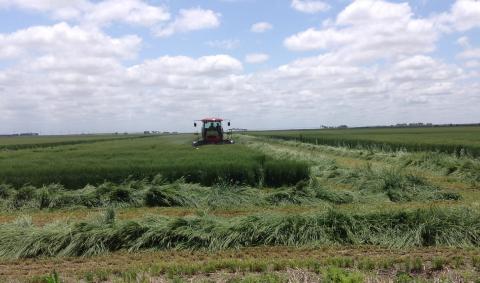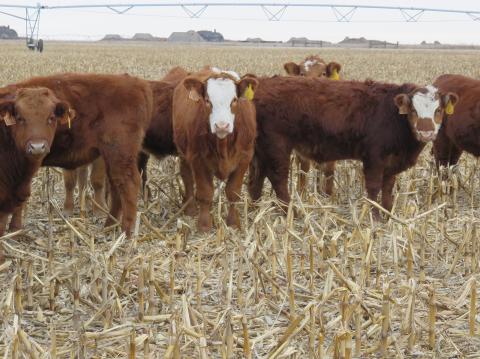Considerations for Forage Cover Crops after Hail in Corn and Soybean
July 9, 2018
If you were hit hard by hail and need to cover your fields, forage cover crops can provide an opportunity for haying or grazing as well as a protective plant layer. Plant selection is a key factor in successfully managing production.
Wheat Forage Options and Considerations
May 17, 2018
This spring many Nebraska livestock producers facing low forage supplies may be looking for new sources, such as from wheat. This Nebraska research on harvest timing suggests how to optimize feed value from wheat forage.
Q&A on Grazing Cereal Rye after an Anhydrous Application
April 19, 2018
This week a CropWatch reader asked: Can you safely graze cover crop rye this spring after anhydrous has been applied? That depends on several factors, write three extension specialists in agronomy and beef production.
Economics of Annual and Perennial Forages Webinar Feb. 13
February 4, 2018
With current corn prices and the limited availability of perennial grass, some producers are asking themselves if growing forages on cropland might be the answer to feeding the cow herd. A webinar to address these questions in addition to showing economic examples will be held Tuesday evening, February 13, from 6:00-7:30 p.m. CST.
Studies Show Minimal Soil Compaction With Winter Grazing
October 24, 2017
Studies conducted by the University of Nebraska-Lincoln at seven locations found that winter grazing of corn residue did not result in biologically significant compaction or negative impacts on subsequent crop yields. This review of the results includes short- and long-term studies
Online Crop Residue Exchange Links Growers and Grazers
August 16, 2017
A new interactive online tool, the Crop Residue Exchange, links farmers with fields of crop residue with livestock producers looking for new grazing opportunities.
Value of Oats and Brassicas for Fall Forage
December 1, 2016
An overview of five experiments evaluating the use of winter-sensitive, cool-season species planted in mid-August after wheat or early September after corn silage harvest for grazing of fall-weaned calves during November and December.
Herbicide Options for Planting Forage Cover Crops after Corn and Soybean
March 18, 2016
Cover crop adoption is continuing to increase throughout Nebraska. Respondents to the 2015 cover crop survey conducted during Nebraska extension meetings indicated the top five desired benefits from cover crops are





